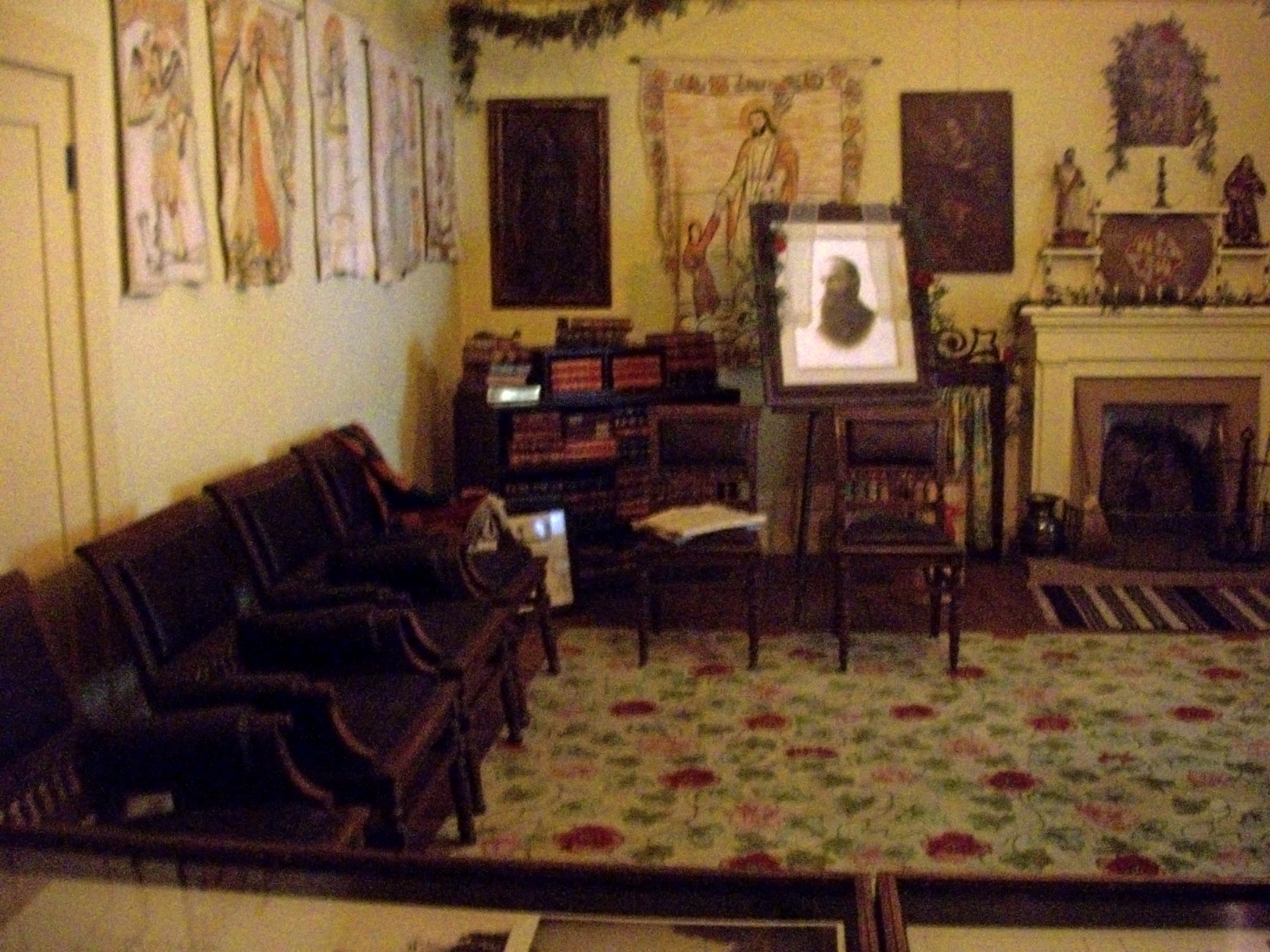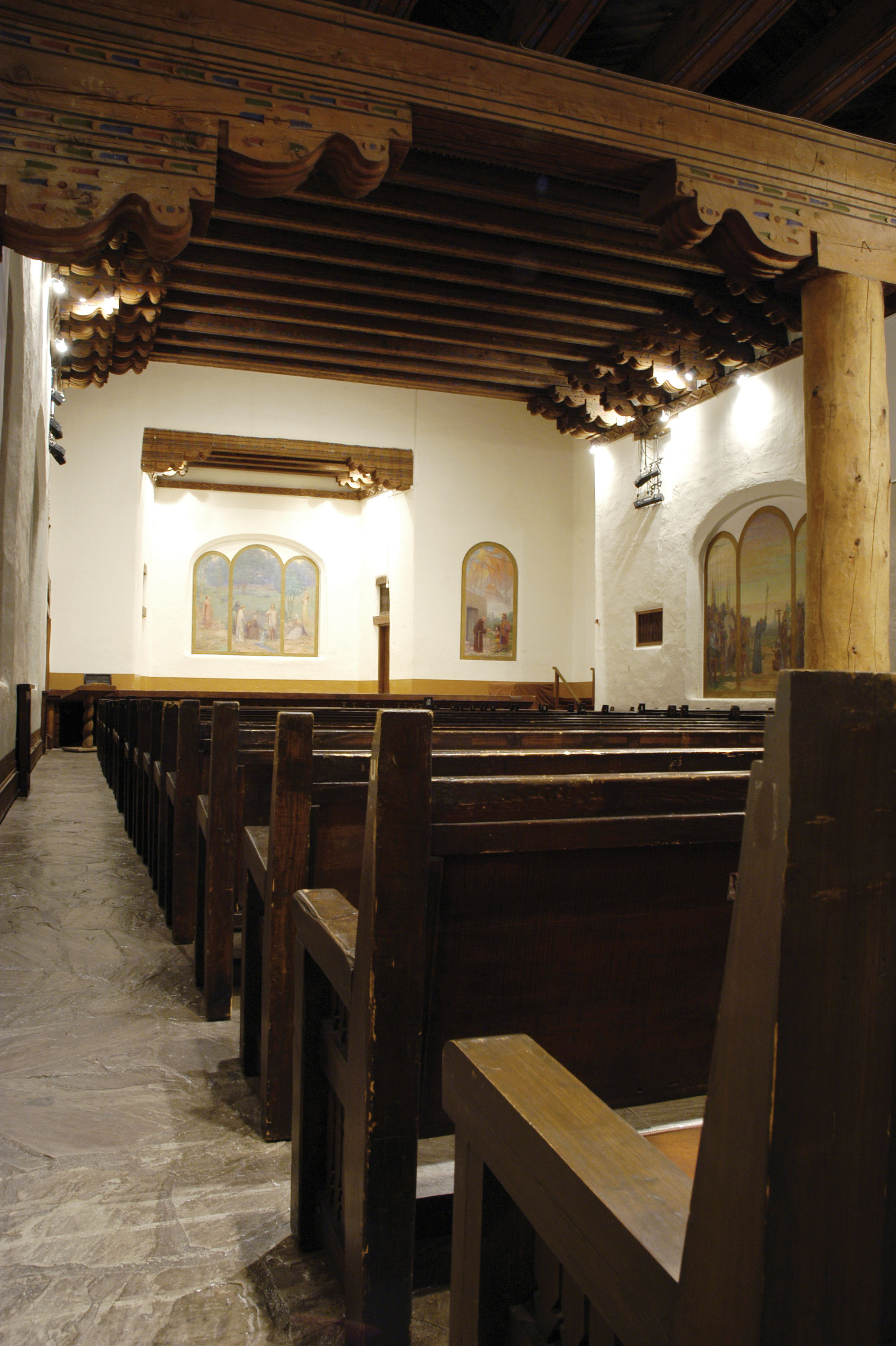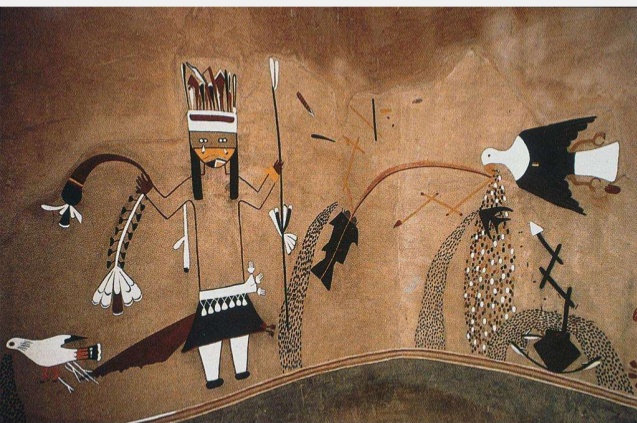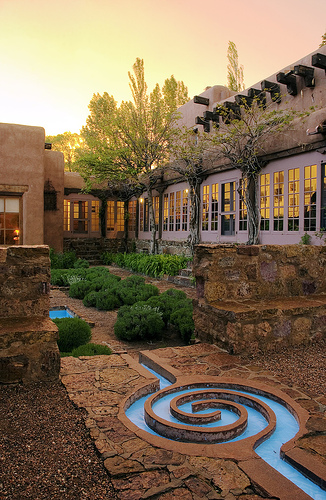|
Museum Of New Mexico
The Museum of New Mexico is a collection of museums, historic sites, and archaeological services governed by the State of New Mexico. It currently consists of six divisions : the Palace of the Governors state history museum, the New Mexico Museum of Art, the Museum of Indian Arts and Culture, the Museum of International Folk Art, the archaeology division, and the state historic sites. Each division within the Museum of New Mexico adheres to policies decided by the Museum of New Mexico Board of Regents, a group of New Mexico residents appointed by the governor with consent of the Senate. History The Museum of New Mexico was established on February 19, 1909, by the New Mexico Territorial legislature. This pre-statehood legislation mandated that the Museum of New Mexico be housed in the historic Palace of the Governors in Santa Fe. Over the years, the Museum of New Mexico added several other properties to include the New Mexico Museum of Art, Laboratory of Anthropology, Museum of Inter ... [...More Info...] [...Related Items...] OR: [Wikipedia] [Google] [Baidu] |
Palace Of The Governors
The Palace of the Governors ( es, Palacio de los Gobernadores) is an adobe structure built in the Territorial Style of Pueblo architecture on Palace Avenue in Santa Fe, New Mexico. Located within the Santa Fe Historic District along the Santa Fe Plaza between Lincoln and Washington avenues, it has served as the seat of government for New Mexico for centuries, having been established as the capitol building of '' Nuevo México'' in 1610. History In 1610, Pedro de Peralta, the newly appointed governor of '' Santa Fe de Nuevo México'' covering most of the modern American Southwest, began construction on the Palace of the Governors, though some recent historical research has suggested that construction began midway through his term in 1618. In the following years, the Palace changed hands as the territory of New Mexico did, seeing the Pueblo Revolt of 1680, the Spanish return from 1693 to 1694, Mexican independence in 1821, American territorial status in 1848, and US statehood in 191 ... [...More Info...] [...Related Items...] OR: [Wikipedia] [Google] [Baidu] |
New Mexico Museum Of Art
The New Mexico Museum of Art is an art museum in Santa Fe governed by the state of New Mexico. It is one of four state-run museums in Santa Fe that are part of the Museum of New Mexico. It is located at 107 West Palace Avenue, one block off the historic Santa Fe Plaza. It was given its current name in 2007, having previously been referred to as The Museum of Fine Arts. History The building was designed by architect Isaac Rapp and completed in 1917. It is an example of Pueblo Revival Style architecture, and one of Santa Fe's best-known representations of the synthesis of Native American and Spanish Colonial design styles. The façade was based on the mission churches of Acoma, San Felipe, Cochiti, Laguna, Santa Ana and Pecos. Collections The museum’s art collection includes over 20,000 paintings, photographs, sculptures, prints, drawings and mixed-media works. Notable artists in the collection include Ansel Adams, Gustave Baumann, Brian O'Connor, Georgia O'Keeffe, Fritz ... [...More Info...] [...Related Items...] OR: [Wikipedia] [Google] [Baidu] |
Museum Of Indian Arts And Culture
The Museum of Indian Arts and Culture is a museum of Native American art and culture located in Santa Fe, New Mexico. It is one of eight museums in the state operated by the New Mexico Department of Cultural Affairs and is accredited by the American Alliance of Museums as part of the Museum of New Mexico system. The museum and its programs are financially supported by the Museum of New Mexico Foundation. The Museum of Indian Arts and Culture is dedicated to the accurate and culturally sensitive presentation of southwestern Native American cultures. Its mission statement emphasizes its intention to work closely with the Native communities of the region. The current interim director is Dr. Matthew Martinez (Ohkay Owingeh). The prior director is Della Warrior ( Otoe-Missouria). Collections Object collections at the Museum of Indian Arts & Culture are divided administratively into "Individually Catalogued Collections," which include typological collections of Southwestern textiles ... [...More Info...] [...Related Items...] OR: [Wikipedia] [Google] [Baidu] |
Museum Of International Folk Art
The Museum of International Folk Art is a state-run institution in Santa Fe, New Mexico, United States. It is one of many cultural institutions operated by the New Mexico Department of Cultural Affairs. History The museum was founded by Florence Dibell Bartlett and opened to the public in 1953 and has gained national and international recognition as the home to the world’s largest collection of international folk art. The collection of more than 135,000 artifacts forms the basis for exhibitions in four distinct wings: Bartlett, Girard, Hispanic Heritage, and Neutrogena.Museum of International Folk Art website10/16/2006 The original building, a gift to the state from Bartlett, was designed by famed New Mexico architect John Gaw Meem. ThGirard Wing with its popular exhibition,'' Multiple Visions: A Common Bond'', showcases folk art, popular art, toys and textiles from more than 100 nations. The exhibition is unique in that it was designed by the donor, Alexander Girard, a leadi ... [...More Info...] [...Related Items...] OR: [Wikipedia] [Google] [Baidu] |
Laboratory Of Anthropology
The Museum of Indian Arts and Culture is a museum of Native American art and culture located in Santa Fe, New Mexico. It is one of eight museums in the state operated by the New Mexico Department of Cultural Affairs and is accredited by the American Alliance of Museums as part of the Museum of New Mexico system. The museum and its programs are financially supported by the Museum of New Mexico Foundation. The Museum of Indian Arts and Culture is dedicated to the accurate and culturally sensitive presentation of southwestern Native American cultures. Its mission statement emphasizes its intention to work closely with the Native communities of the region. The current interim director is Dr. Matthew Martinez (Ohkay Owingeh). The prior director is Della Warrior ( Otoe-Missouria). Collections Object collections at the Museum of Indian Arts & Culture are divided administratively into "Individually Catalogued Collections," which include typological collections of Southwestern textiles ... [...More Info...] [...Related Items...] OR: [Wikipedia] [Google] [Baidu] |
Coronado Historic Site
Coronado Historic Site is the Tiwa pueblo of Kuaua and a historic site that is part of the State-governed Museum of New Mexico system. It is located along U.S. Federal Route 550, 1 mile west of Bernalillo and 16 miles north of Albuquerque. History The Coronado Historic Site is most noted for Kuaua Pueblo (Tiwa for "Evergeen"). The ''pueblo'' or village was settled about 1325 and abandoned toward the end of the 16th century. The Coronado Historic Site was the first state archaeological site to open to the public. It was dedicated on May 29, 1940, as part of the ''Cuarto Centenario'' commemoration (400th Anniversary) of Francisco Vásquez de Coronado's entry into New Mexico. James F. Zimmerman was its first president. Flint & Flint New Mexico State Records and Archives Although it is named for Vasquez de Coronado, who camped in the vicinity in 1540–1542, the site is of Kuaua Pueblo which was one of several Tiwa-speaking pueblos in the area when the ''conquistador'' Vasquez de C ... [...More Info...] [...Related Items...] OR: [Wikipedia] [Google] [Baidu] |
Fort Selden
Fort Selden was a United States Army post, occupying the area in what is now Radium Springs, New Mexico. The site was long a campground along the El Camino Real de Tierra Adentro. It was the site of a Confederate Army camp in 1861. The U. S. Army established Fort Selden in 1865 for the purpose of protecting westward settlers from Native American raids, but the post fell into disrepair after the American Civil War. It was ultimately abandoned in 1891, due in large part to the decision to expand Fort Bliss and the lack of any expenditures for repair of the facility. History Paraje de Robledo For centuries the site of Fort Selden had been the Paraje de Robledo, a camp site along the course of the El Camino Real de Tierra Adentro on the east bank of the Rio Grande. The campground or paraje was named for an old Spanish soldier, Pedro Robledo, who died and was buried there on the 1598 expedition of Juan de Oñate. It became known as La Cruz de Robledo because of the cross origin ... [...More Info...] [...Related Items...] OR: [Wikipedia] [Google] [Baidu] |
Bosque Redondo Memorial
Fort Sumner was a Fortification, military fort in New Mexico Territory charged with the internment of Navajo Nation, Navajo and Mescalero Apache populations from 1863 to 1868 at nearby Bosque Redondo. History On October 31, 1862, Congress of the United States, Congress authorized the construction of Fort Sumner. General James Henry Carleton initially justified the fort as offering protection to settlers in the Pecos River valley from the Mescalero Apache, Kiowa, and Comanche. He also created the Bosque Redondo Indian reservation, reservation, a area where over 9,000 Navajo Nation, Navajo and Mescalero, Mescalero Apaches were forced to live because of accusations that they were raiding white settlements near their respective homelands. The fort was named for General Edwin Vose Sumner. The Indian reservation, reservation was to be self-sufficient, while teaching Mescalero, Mescalero Apache and Navajo people, Navajo how to be modern farmers. General Edward Canby, whom Carleton re ... [...More Info...] [...Related Items...] OR: [Wikipedia] [Google] [Baidu] |
Jemez Historic Site
The Jemez Historic Site (formerly Jemez State Monument) is a state-operated historic site on New Mexico State Road 4 in Jemez Springs, New Mexico. The site preserves the archaeological remains of the 16th-century Native American Gíusewa Pueblo and the 17th-century Spanish colonial mission called San José de los Jémez. The site was listed on the National Register of Historic Places in 1973, and in 2012 it was designated as a National Historic Landmark. It is considered an ancestral site of the Jémez Pueblo people who live nearby. Description The Jemez Historic Site is located north of the village of Jemez Springs, in the Jemez River valley. It is on the east side of New Mexico State Road 4, near the mouth of Church Canyon. The site is about in size, and includes partially stabilized remains of a Native American pueblo and a Spanish mission compound. The principal feature of the latter are the remnant walls of the church, which at in length represent one of the largest 1 ... [...More Info...] [...Related Items...] OR: [Wikipedia] [Google] [Baidu] |
Lincoln Historic Site
Lincoln most commonly refers to: * Abraham Lincoln (1809–1865), the sixteenth president of the United States * Lincoln, England, cathedral city and county town of Lincolnshire, England * Lincoln, Nebraska, the capital of Nebraska, U.S. * Lincoln (name), a surname and given name * Lincoln Motor Company, a Ford brand Lincoln may also refer to: Places Canada * Lincoln, Alberta * Lincoln, New Brunswick * Lincoln Parish, New Brunswick * Lincoln, Ontario ** Lincoln (electoral district) (former), Ontario ** Lincoln (provincial electoral district) (former), Ontario United Kingdom * Lincoln, England ** Lincoln (UK Parliament constituency) * Lincoln Green, Leeds United States * Lincoln, Alabama * Lincoln, Arkansas * Lincoln, California, in Placer County * Lincoln, former name of Clinton, California, in Amador County * Lincoln, Delaware * Lincoln, Idaho * Lincoln, Illinois * Lincoln, Indiana * Lincoln, Iowa * Lincoln Center, Kansas * Lincoln Parish, Louisiana * Lincoln, Maine ... [...More Info...] [...Related Items...] OR: [Wikipedia] [Google] [Baidu] |
El Camino Real Historic Trail Site
The El Camino Real Historic Trail Site was a center about the culture and history about the El Camino Real trail and the colonization of New Mexico. The center, an official New Mexico Historic Site, opened in 2005 and closed in 2016. The Center featured exhibit panels and artifacts about the people who traveled along the trail, the desert and life in the 18th century. Mission The center commemorated the heritage of the antiquated road that connected Mexico City with Santa Fe, New Mexico in the region once known as New Spain. The center was operated by the New Mexico Department of Cultural Affairs until it closed. The US Bureau of Land Management and the countries of Spain and Mexico contributed to the project. The facility was completed in 2005 and was designed by Dekker / Perich / Sabatini Architects and Engineers of Albuquerque. The museum closed permanently in November 2016. Location It was situated approximately halfway between the cities of Albuquerque, New Mexico and ... [...More Info...] [...Related Items...] OR: [Wikipedia] [Google] [Baidu] |
School Of American Archaeology
The School for Advanced Research (SAR), until 2007 known as the School of American Research and founded in 1907 as the School for American Archaeology (SAA), is an advanced research center located in Santa Fe, New Mexico, USA. Since 1967, the scope of the school's activities has embraced a global perspective through programs to encourage advanced scholarship in anthropology and related social science disciplines and the humanities, and to facilitate the work of Native American scholars and artists. SAR offers residential fellowships for artists and scholars, and it publishes academic and popular non-fiction books through SAR Press. Foundation In the early years of the 20th century, archaeology was a young discipline with roots in historical studies of Old World antiquities. In 1906 Alice Cunningham Fletcher, an anthropologist and ethnographer of Plains Indian groups, was on the American Committee of the Archaeological Institute of America. The AIA, founded in Boston in 1879, ... [...More Info...] [...Related Items...] OR: [Wikipedia] [Google] [Baidu] |




